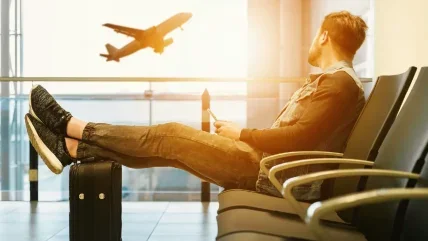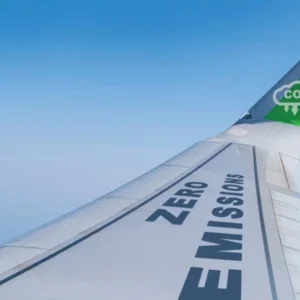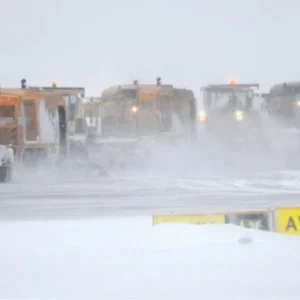
Airports can be stressful at the best of times. However, even distinguished maestros of post-9/11 travel would surely have struggled at Gatwick in the summer of 2021. Over a few days at the end of August, Britain’s second airport was reduced to utter shambles. Queues stretched across the terminal, while passengers faced an avalanche of cancelled flights and missed connections. Nor were paying customers the only ones to get frustrated. At the end of May, a WizzAir captain was caught losing his temper over the tannoy, after a flight bound for Cyprus was left stranded on a Gatwick runway for seven hours. “I don’t need this!” he shouted at bemused holidaymakers – even if they presumably appreciated the sentiment.
To be clear, Gatwick is far from unique here. Across London, passengers at Heathrow were forced to sleep on the floor, even as their bags were piled up on the concourse. In Manchester, the check-in queue snaked out of the terminal altogether, forcing travellers to wait in the car park. Nor is this a purely British problem. Schiphol in the Netherlands was just one of the major European airports to experience similar trouble, with Frankfurt in Germany and Orly in France close behind. And while there are doubtless a range of factors at play here, from mechanical faults on aircraft to IT hiccups, these varied disruptions can equally be understood in a single word: staffing. A particularly pressing issue since the pandemic – aviation lost 2.3 million jobs worldwide during Covid-19 – a lack of workers has caused misery for passengers as check-in desks go unmanned and baggage carousels sit empty. Even worse, not having enough staff can create genuine security worries, exacerbating delays even as queues worsen.
Not that the situation is hopeless, with new technology promising much and already delivering. Between virtual queuing and self-service security, executives believe digitalisation can revolutionise the airport experience for customers, even as they shave rota sheets and place leftover workers more efficiently. Naturally, not even the most ambitious airport executive can expect these changes to just happen. On the contrary, any change requires careful planning, a close relationship with passengers and the flexibility to make tweaks once a reform has started. That’s shadowed, moreover, by improving pay and conditions for whoever remains. Get it right, though, and airports could have the chance to finally drag customer service back to a tolerable standard – and boost their finances at the same time.
Having a staff
At this point, it’s hardly novel to state that global aviation has had a difficult few years. With the industry suffering a 60% slump in bookings over 2020, passenger numbers aren’t expected to fully recover until 2024. But if lounges and airside bars were ominously quiet, staff rooms have suffered too. That’s clear across a bewildering range of departments – in the US, the Transportation Security Administration faced a 6,000-person shortfall in recruitment targets in 2021, while Manchester Airport found itself so short of baggage handlers that a flight to Madrid left without any bags at all.
Other airports, for their part, have found it hard to fill hospitality jobs. After reopening post-2020, for instance, Phoenix Sky Harbor found it hard to staff terminal shops and restaurants. “This created the challenge of quickly re-opening concessions at a time when workers across many industries had made changes in their own lives and decided not to return to their pre-pandemic jobs,” explains Gregory Roybal, one of the airport’s public information officers. “That impact was felt in all service areas, especially with the food and retail vendors.”
In part, these shortfalls are obviously down to the pandemic itself. With previously stable jobs vanishing, airports have found it hard to rehire staff now that demand is returning. But as Roybal’s comments imply, the industry’s current staffing woes are down to more than just Covid. One reason is passengers themselves. Aviation in general may still be clambering out from the trough of 2020, but if you think of an airport like Heathrow, which lately saw a 406% jump in visitors, and you can soon see how operators might struggle. Ask union leaders, for their part, and they’ll point to the low wages faced by many airport workers. At Dallas Fort Worth International, some employees made as little as $2 an hour, plus tips, before the pandemic. While that has now risen to $8 an hour, it’s hardly the kind of wage that keeps anyone loyal.
Beyond the why, at any rate, the how of these shortages are equally stark. In part, that can be seen in the chaotic scenes that recently afflicted airports – something Ulla Lettijeff admits has also impacted operations in her own work. “During some exceptional peak hours,” says Lettijeff, a director at Finavia, which operates Helsinki Airport, “staff shortages have unfortunately led to queues longer than normal for passengers at the security control, as well as longer waiting times with luggage handling.” And beyond the carnage spotted by journalists, there are other, deeper problems at play. Some insiders, including Airports Council International, worry about the security risks here, as harried managers rush to hire staff without the proper checks. Then there’s the impact a lack of personnel can have on corporate bottom lines. Gatwick and Heathrow are just two of the giants to slap a limit on the number of passengers who can travel through their terminals – with airlines like British Airways forced to cancel flights and foot the resulting loss of earnings.
6,000
The shortfall in 2021 recruitments targets faced by the US Transportation Security Administration.
Transportation Security Administration
Checked out at the check-in
If you visit Phoenix Sky Harbor, you may be surprised by your experience. Park your car near the terminal and you won’t be greeted by an attendant. Instead, you’ll simply wave a contactless barcode and be shepherded through the gate. Once you reach the terminal, you don’t have to queue to get through security. Rather, you can reserve a time on a mobile app, then simply approach the checkpoint when your appointment arrives. Even straightforward identification works differently at Phoenix Sky Harbor. If you’re a local resident, you can verify your identity via your mobile, along the way saving the hassle of taking out your passport or driving licence. For Daver Malik, at any rate, these varied efforts can be seen as ways of improving the customer experience. As the assistant chief information officer at Phoenix Sky Harbor puts it: “We set out to see how we could use digitalisation to impact the security process and ease the anxiety for passengers.”
A fair point. Pulling out an app certainly sounds more enjoyable than standing in a queue, while as Malik says, 90% of passengers who tried Sky Harbor’s security reservation system said they’d try it again. Nor is the American airport the only place to use new technology to bolster customer experience. In Helsinki, for instance, new scanning equipment means flyers no longer need to remove electronics or liquids from their bags. Elsewhere, the airport’s customer care team uses chatbots to manage interactions with visitors. The point, says Leyla Akgez-Laakso, CIO at Finavia, is to offer a “smooth travelling experience” while also making “the whole operation more efficient”. It’s a similar story across the sector too: according to work by ResearchAndMarkets, airport digitalisation could be a $8.5bn business as soon as 2030.
As Akgez-Laakso’s note on efficiency implies, keeping passengers happy isn’t the only concern here. On the contrary, experts in both Finland and the US are keen to emphasise that technology can also be vital to beat staffing shortages. This isn’t hard to understand, even just by returning to Phoenix Sky Harbor. From the contactless car park to the sharper security, the airport is able to drastically cut the need for attendants and helpers. And technology can be equally helpful in getting the most out of the workers that remain. As Malik explains, his airport now uses data analysis of passenger habits to help managers allocate workers to different concessions, a system that’s also proved useful in organising cleaning schedules. More to the point, Malik stresses that these arrangements are a godsend for hiring managers. “We are hearing directly from all business partners who are using this data,” he says, “that it has been an invaluable tool for them amidst staff shortages and tight labour market conditions.” It goes without saying, too, that sending fewer paychecks means happier airport accountants – fortunate given European airports alone lost out on $39.7bn in revenue in 2021.
Paying off
All the same, it’d be wrong to suggest that technology is a silver bullet here. For one thing, any transformation requires the consent of passengers. Think about it like this: you can have the most sophisticated check-in system on earth, but if passengers don’t know how it works, an airport risks causing even longer queues – and increasing the need for additional workers to keep order. Nor is this merely a hypothetical danger. In 2018, to give one example, the crash of the flight information screens at Gatwick left thousands of travellers confused. No wonder, then, that airports are careful to temper technical innovations with thoughtful planning. Education is especially important here, with Akgez- Laakso describing how videos and explanatory signs accompany every technical tweak at Helsinki. Malik makes a similar point, noting that his team conducts monthly exercises to plan for digital hiccups.
All this is doubtless useful. But from baggage handling to baristas, it’s not as if technology can banish the need for human staff altogether. And with airports the world over still battling to fill flesh-and-bone quotas – even Singapore’s technologically advanced Changi Airport faces a shortfall of 6,600 workers – it’s clear that managers must find ways to seduce employees. One obvious tactic is paying them more. At Changi, in fact, auxiliary police officers are now being offered a sign-on bonus of S$25,000 ($18,000), or around ten times the basic monthly salary. In Phoenix, Roybal says the Sky Harbor is running monthly job fairs to get people interested, adding that as of September 2022, “all but a handful” of airport food and retail spots have reopened. To keep them that way, however, you suspect operators will have to keep their wallets open for longer, and not just to pay for new technology.
2.3 million
The number of jobs lost globally across the aviation industry due to Covid-19.
IATA
$8.5bn
The expected global value of airport digitalisation by 2030.
ResearchAndMarkets






